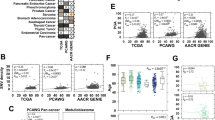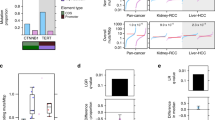Abstract
The age and sex distribution of 1223 cases of intracranial gliomata, diagnosed in the geographical area covered by the Mersey Regional Cancer Registry over the period 1961-70, are analysed. In children and adults, the intracranial gliomata predominates in males, the tumour incidence figures indicating a ratio of 3 : 2. For young adults, the tumour incidence increases with age and is approximately the same in males and females. It is not until the age group 45-49 years is reached that the tumour incidence in males is higher. The peak tumour incidence occurs at the same age in both sexes (60-64 years) and thereafter incidence declines with age. These results are compared with previously published human data, and with the findings of experimental studies in the rat. Factors including naturally occurring changes in the hormone levels are discussed, in an attempt to explain the observed age-related sex differences.
This is a preview of subscription content, access via your institution
Access options
Subscribe to this journal
Receive 24 print issues and online access
$259.00 per year
only $10.79 per issue
Buy this article
- Purchase on Springer Link
- Instant access to full article PDF
Prices may be subject to local taxes which are calculated during checkout
Similar content being viewed by others
Rights and permissions
About this article
Cite this article
Hopewell, J., Edwards, D. & Wiernik, G. Sex dependence of human intracranial gliomata. Br J Cancer 34, 666–670 (1976). https://doi.org/10.1038/bjc.1976.230
Issue Date:
DOI: https://doi.org/10.1038/bjc.1976.230



